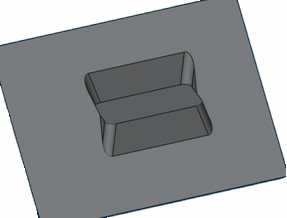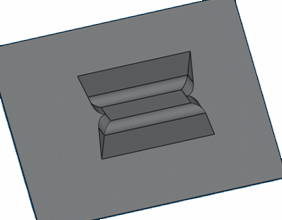-
From the Design section of the action bar, click Diabolo Function
 . .
The Diabolo Function Definition dialog box is displayed.
- Select the Input Profile of the base surface.
If a select a finite profile, the support boundary is used. -
Select the Support of the base surface.
When you select a planar profile, the support is computed by default using the support plane of the profile. -
Optional:
Define the Projection direction, i.e. the direction used to project the profile onto the support.
If it is not valuated, two default projection modes are available:
- Normal to support: the profile is projected using a normal projection onto the support.
- Normal to profile: if the profile is planar, the projection is computed normally to this plane. If the profile is a sketch, the support plane of the sketch is used for projection.
- Optional: Define the Draft Direction, i.e. the direction for the side faces, which are drafted from the kept part of the support surface.
If it is not valuated, the draft is computed normally to the support surface. - Optional: Define the other parameters:
- Draft Angle: defines the angle between the draft direction or the support surface and the lateral faces.
- Lateral Fillet: defines the radius of the fillet that is computed on the lateral edges. If no radius is defined, no fillet is computed.

- Support Fillet: defines the radius of the fillet that is made on the top edges. If no radius is defined, no fillet is computed.

- Intersection fillet radius: defines the radius of the fillet that if made on the edges between the stamp and the context. If no radius is defined, no fillet is computed.
- Length: corresponds to the length of the side walls. You have to manually define a length as it is not automatically computed.
- Click OK to create the diabolo.
The element (identified as Diabolo Function) is added to the tree.
|